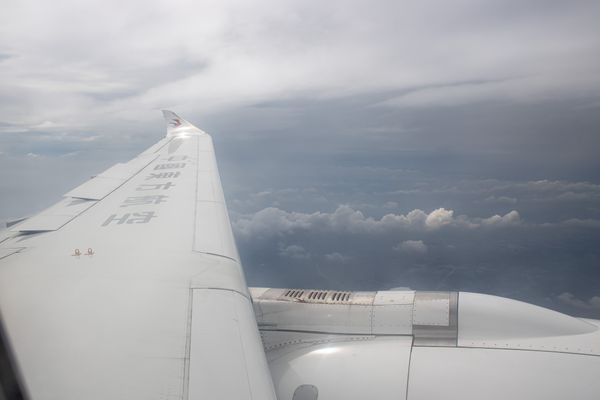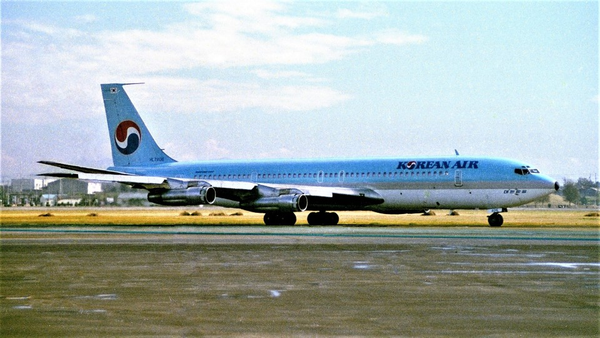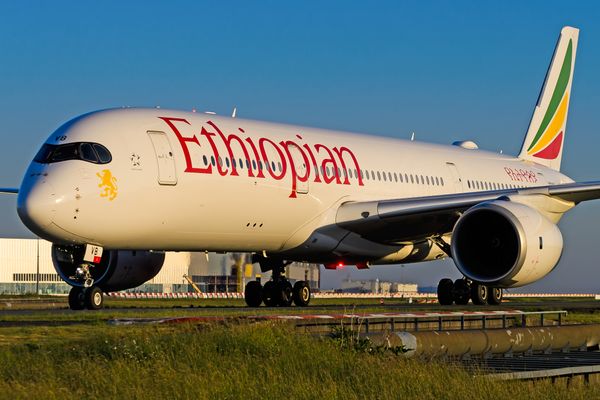Whenever one of my friends asks me how I can just jet off to places like Santiago, Chile, for a weekend or Washington, D.C., for a few hours, I tell them that I can fly for free on an airline since one of my parents works for Delta (plus I got to intern with Delta during fall 2023). "Flying for free? You must be the luckiest guy in the world!" Yes, I will not deny that flying for free is one of the best perks of being an airline employee or related to one. However, flying on standby can be intense and frustrating, especially during peak travel times.

How It Works
Although every airline has different policies, I will speak about Delta's. Nonrevenue passengers are on a separate standby list, usually ranked by employee seniority at the company. They can get on a flight as long as there are seats available on the flight. However, based on your seniority and how busy the route typically is, it can take a lot of work to estimate your chances of getting on a certain flight, even just within a few hours of departure time.
As someone who has taken over 220 flights so far, I have run into all kinds of standby situations, from having a perfectly smooth and easy trip to suddenly being unable to get on a flight, whether it was because more standby passengers showed up in front of me, passengers buying last minute tickets, or even over payload optimization issues. Flying as a nonrevenue passenger almost requires you to become an expert on your airline's networks, as you must figure out several alternatives to get to your final destination if your intended one does not work. You may even have to forego your trip or choose a different destination.

Story 1: A Smooth Experience
At the beginning of February, I decided to go on a day trip with one of my friends from Atlanta to Philadelphia. I met him when I interned with a bulge bracket bank in the summer of 2023, and he worked full-time with Delta a few months later. On that day, there were over 40 seats on both flights and hardly any standby passengers, making the departure and return flights easy to get on.
We could walk around Philadelphia for a few hours and enjoy the food scene there. After our trip, we could even score entire rows to ourselves in comfort plus on the Airbus A321, making it a stress-free travel day.

Story 2: Intensity and Clever Planning
In March, I went to London for spring break. While I could make it there and back, both legs of the journey were quite intense and required me to take some interesting routes. As both nonstop flights between Atlanta and London were oversold, I had to remain flexible. Unfortunately, even though Delta flew to London from several other destinations, most were either oversold or in the single digits leading up to my day of departure.
However, I noticed that a flight between Los Angeles and London on the Delta Airbus A330 NEO had over 50 seats left, so I decided to fly to London via the "wrong way" to Los Angeles and have a nine-hour layover there. When I landed in Los Angeles, the seat count changed from 50 to being oversold by 1, most likely due to Delta having to reroute oversold passengers to London via Los Angeles. It also did not help that more standby passengers added themselves to the list close to the departure time. Although my layover in Los Angeles was quite intense, most standby passengers, including myself, miraculously got on since some passengers did not show up.

Story 3: Disappointment
While I have been able to get lucky with standby in more recent years, I have also experienced plenty of disappointments, especially when my mom did not have high seniority at Delta. In 2012, I remember feeling very disappointed when my family and I tried to go on a quick trip to Disney World in Orlando. There were few seats on the plane left for nonrevenue passengers, and we kept getting pushed down on the standby list by employees with higher seniority. Due to the situation, we just went back home.
Besides not having seats, I have also encountered situations where I could not get on a flight due to payload optimization. This usually happens on long-haul international flights, where passengers may be denied boarding based on aircraft weight restrictions. Earlier this January, I planned to fly back from Seoul-Incheon to Minneapolis via Detroit with my mom and brother. However, despite having over 30 seats left on the flight, my brother was the only one able to get on due to payload optimization.
My mom and I had to wait in the airport for over 10 hours to fly nonstop between Incheon and Minneapolis. Thankfully, Seoul's airport has a free rest lounge and a great atmosphere, so the layover was pretty decent. I ended up plane spotting for a majority of the time and even caught some rare planes (for me), such as Air Astana's Airbus A321NEO and MIAT Mongolian's Boeing 737-800.

Moral of the Story Plus Tips
If you are ever lucky enough to get the chance to work for an airline, flying for free is worth it despite the uncertainty that comes with it. To ensure a smooth experience, always plan on a few plausible alternatives, maintain flexibility, and, most importantly, patience. You may have to wait in airports for several hours or even overnight when things do not go smoothly. Worst case, you may have to buy a plane ticket.
Try to find something to do during long layovers, such as plane spotting, people-watching, getting ahead on work, or even sleeping. Flying as a nonrevenue passenger truly unlocks the feeling of "the world is your oyster." My adventures, whether or not they are smooth, have been a movie.
Game Day: The Unseen Operation Behind College Sports Travel » KAL858: The North Korean Bombing that Shocked the World » Delta Sets Firm October 2026 Launch for Historic Atlanta–Riyadh A350 Service »
Comments (0)
Add Your Comment
SHARE
TAGS
TRIP REPORTS Delta Air Lines Nonrevving Standby Careers Employee Travel Atlanta London Seoul South Korea UK United KingdomRECENTLY PUBLISHED
 VIDEO: What It's Like Onboard China's COMAC C919
We flew onboard China Eastern's COMAC C919 to experience China's homegrown narrow-body up close. From seat comfort to cabin layout to noise levels to tech: how does it really compare with the Boeing 737 and Airbus A320? This review puts all three workhorses under the same spotlight.
TRIP REPORTS
READ MORE »
VIDEO: What It's Like Onboard China's COMAC C919
We flew onboard China Eastern's COMAC C919 to experience China's homegrown narrow-body up close. From seat comfort to cabin layout to noise levels to tech: how does it really compare with the Boeing 737 and Airbus A320? This review puts all three workhorses under the same spotlight.
TRIP REPORTS
READ MORE »
 KAL858: The North Korean Bombing that Shocked the World
Among the 99 passengers boarding Korean Air Flight 858 on November 29, 1987, few could imagine their journey would end as one of aviation's darkest mysteries.
STORIES
READ MORE »
KAL858: The North Korean Bombing that Shocked the World
Among the 99 passengers boarding Korean Air Flight 858 on November 29, 1987, few could imagine their journey would end as one of aviation's darkest mysteries.
STORIES
READ MORE »
 Ghost Networks: The Rise, Fall, and Revival of Fifth-Freedom Flights
Fifth-freedom flights — routes where an airline flies between two countries outside its home base — have always lived in aviation's twilight zone. We chart their rise, their near-disappearance, and the surprising markets where they still thrive today. Then we take you on board a special Seoul-Tokyo fifth-freedom flight to show how the experience stacks up against a typical regional carrier.
TRIP REPORTS
READ MORE »
Ghost Networks: The Rise, Fall, and Revival of Fifth-Freedom Flights
Fifth-freedom flights — routes where an airline flies between two countries outside its home base — have always lived in aviation's twilight zone. We chart their rise, their near-disappearance, and the surprising markets where they still thrive today. Then we take you on board a special Seoul-Tokyo fifth-freedom flight to show how the experience stacks up against a typical regional carrier.
TRIP REPORTS
READ MORE »



